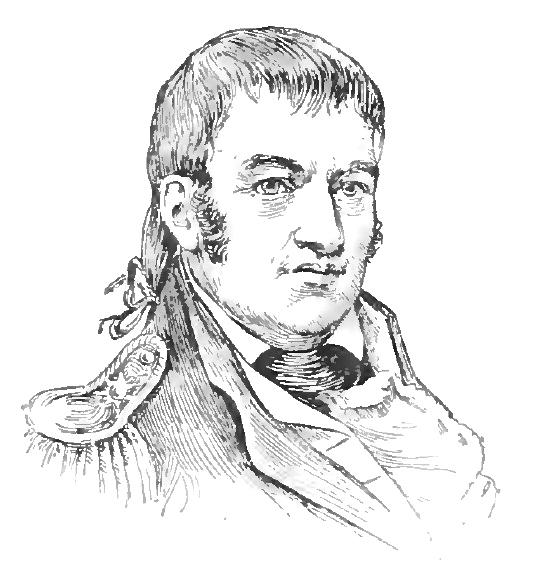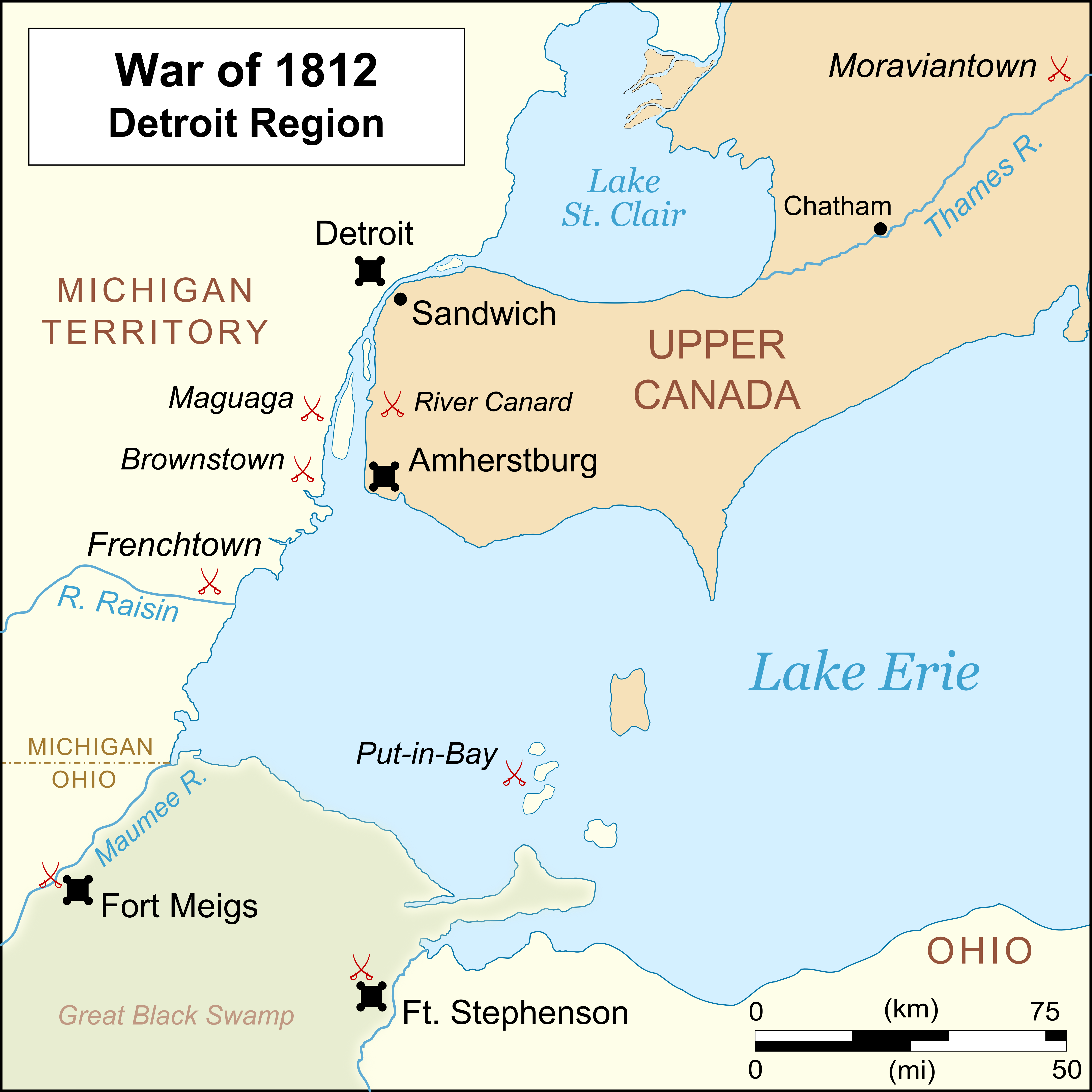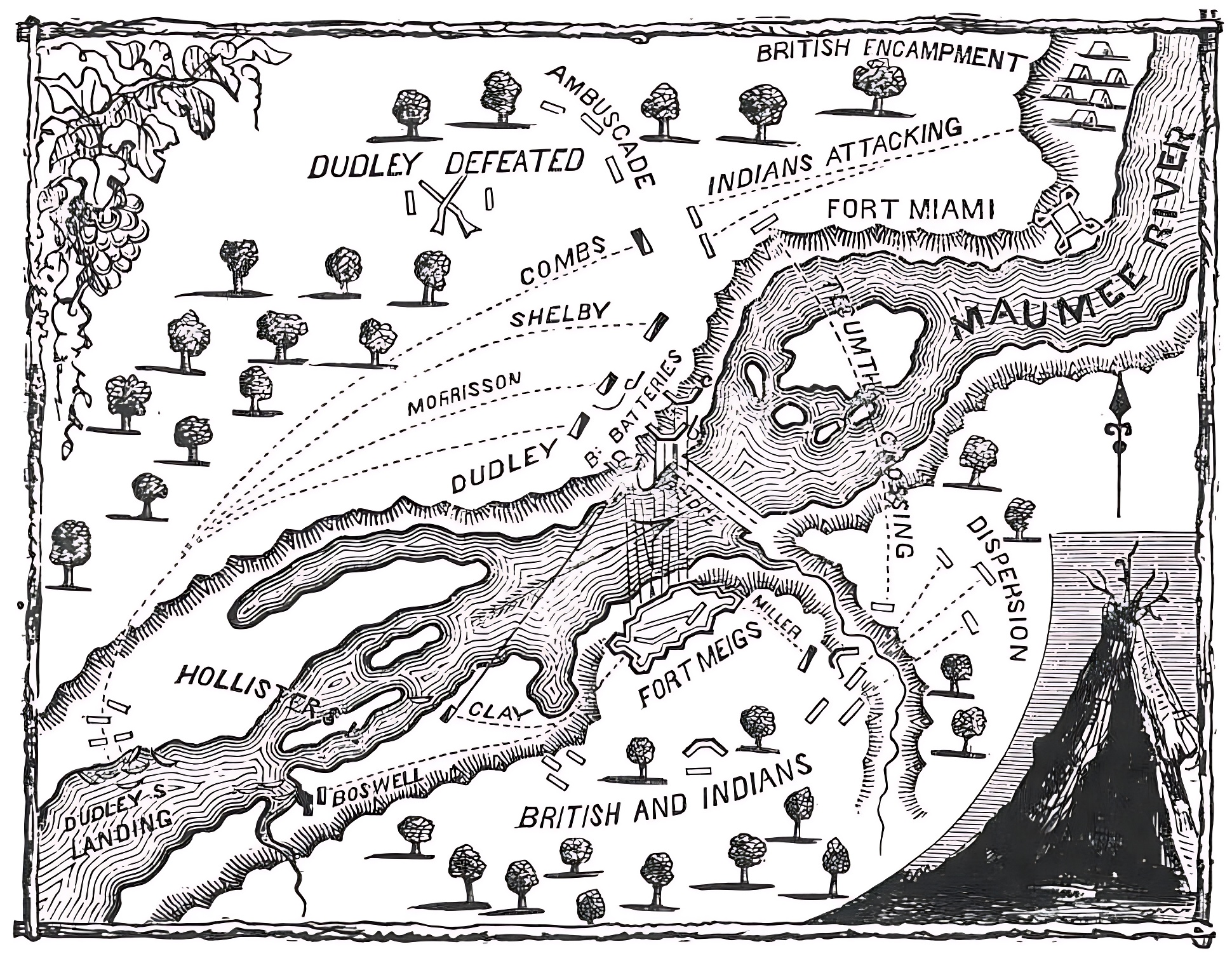|
Robert Dickson (fur Trader)
Robert Dickson (c.1765 – 20 June 1823) was a fur trader, and later an officer in the British Indian Department in Upper Canada, who played a prominent part in the War of 1812. Early life He was born in Dumfries, Scotland where his father was a merchant. When his father's business failed, Robert and his brothers, William Dickson (Upper Canada), William and Thomas Dickson (Upper Canada politician), Thomas, traveled to Canada to work for their cousin Robert Hamilton (judge), Robert Hamilton. While Robert's brothers made careers for themselves in Niagara-on-the-Lake, Newark and the Niagara peninsula, Robert found routine office work tedious, and was sent to Mackinac Island in 1786 to trade on his own. He spent many years trading among the Sioux, Ho-Chunk, Winnebago, and Ojibwe in modern northern Wisconsin, Iowa, Minnesota, and South Dakota. In 1797, he married Ista Towin or Totowin (Helen Elizabeth), the daughter of chief Wakinyanduta (Red Thunder) of the Cuthead band of the ... [...More Info...] [...Related Items...] OR: [Wikipedia] [Google] [Baidu] |
Dumfries
Dumfries ( ; sco, Dumfries; from gd, Dùn Phris ) is a market town and former royal burgh within the Dumfries and Galloway council area of Scotland. It is located near the mouth of the River Nith into the Solway Firth about by road from the Anglo-Scottish border and just away from Cumbria by air. Dumfries is the county town of the historic county of Dumfriesshire. Before becoming King of Scots, Robert the Bruce killed his rival the Red Comyn at Greyfriars Kirk in the town on 10 February 1306. The Young Pretender had his headquarters here during a 3-day sojourn in Dumfries towards the end of 1745. During the Second World War, the bulk of the Norwegian Army during their years in exile in Britain consisted of a brigade in Dumfries. Dumfries is nicknamed ''Queen of the South''. This is also the name of the town's professional football club. People from Dumfries are known colloquially in Scots language as ''Doonhamers''. Toponymy There are a number of theories on the etymo ... [...More Info...] [...Related Items...] OR: [Wikipedia] [Google] [Baidu] |
South Dakota
South Dakota (; Sioux language, Sioux: , ) is a U.S. state in the West North Central states, North Central region of the United States. It is also part of the Great Plains. South Dakota is named after the Lakota people, Lakota and Dakota people, Dakota Sioux Native Americans in the United States, Native American tribes, who comprise a large portion of the population with nine Indian reservation, reservations currently in the state and have historically dominated the territory. South Dakota is the List of U.S. states and territories by area, seventeenth largest by area, but the List of U.S. states and territories by population, 5th least populous, and the List of U.S. states and territories by population density, 5th least densely populated of the List of U.S. states, 50 United States. As the southern part of the former Dakota Territory, South Dakota became a state on November 2, 1889, simultaneously with North Dakota. They are the 39th and 40th states admitted to the union; Pr ... [...More Info...] [...Related Items...] OR: [Wikipedia] [Google] [Baidu] |
Andrew Bulger
Andrew H. Bulger (1789–1858) was a soldier and colonial administrator, born at St. John's, Newfoundland and Labrador, St John's in the Crown Colony of Colony of Newfoundland, Newfoundland. In 1804 he joined the Canadian Units of the War of 1812#The Royal Newfoundland Fencibles, Royal Newfoundland Fencibles as an ensign, and within two years received his commission as a lieutenant. On the outbreak of the War of 1812, a substantial detachment from the regiment was sent to Upper Canada to serve as marines on armed vessels on the Great Lakes. With this contingent, Bulger saw action at the Battle of Detroit and Battle of Stoney Creek, and on the Saint Lawrence River, Saint Lawrence, as well as at the Battle of Crysler's Farm. Late in 1813, he was appointed adjutant to Lieutenant Colonel Robert McDouall, newly appointed commander of the post at Fort Mackinac. Leading a party of the Royal Newfoundlanders, he was slightly wounded in the Engagement on Lake Huron in which Engagements on Lak ... [...More Info...] [...Related Items...] OR: [Wikipedia] [Google] [Baidu] |
Prairie Du Chien
Prairie du Chien () is a city in and the county seat of Crawford County, Wisconsin, United States. The population was 5,506 at the 2020 census. Its ZIP Code is 53821. Often referred to as Wisconsin's second oldest city, Prairie du Chien was established as a European settlement by French voyageurs in the late seventeenth century. Its settlement date of June 17, 1673, makes it the fourth colonial settlement by European settlers in the Midwestern United States, following Green Bay, Wisconsin, Sault Ste. Marie, Michigan, and St. Ignace, Michigan. The city offers many sites showing its rich and important history in the region. The city is located near the confluence of the Wisconsin and Mississippi rivers, a strategic point along the Fox-Wisconsin Waterway that connects the Great Lakes with the Mississippi. This location offered early French missionaries and explorers their first access and entrance to the Mississippi River. Early French visitors to the site found it occupied by ... [...More Info...] [...Related Items...] OR: [Wikipedia] [Google] [Baidu] |
Engagement On Lake Huron
The series of Engagements on Lake Huron left the British in control of the lake and their Native American allies in control of the Old Northwest for the latter stages of the War of 1812. An American force which had failed to recapture the vital outpost at Fort Mackinac in August 1814 attempted to starve its garrison into surrender by destroying the schooner Nancy which carried supplies to Mackinac from the Nottawasaga River and then blockading the island with two gunboats. A party of sailors of the Royal Navy and soldiers from the garrison of Mackinac captured both gunboats by surprise in the first week of September, leaving the British in control of the lake until the end of the war. Background The Old Northwest, as the modern American Midwest was known at the time, was inhabited by various Native American peoples who in the late 18th and early 19th centuries were resisting, with British support, efforts of American colonists to settle in the region. The British military outp ... [...More Info...] [...Related Items...] OR: [Wikipedia] [Google] [Baidu] |
Battle Of Mackinac Island
The Battle of Mackinac Island (pronounced ''Mackinaw'') was a British victory in the War of 1812. Before the war, Fort Mackinac had been an important American trading post in the straits between Lake Michigan and Lake Huron. It was important for its influence and control over the Native American tribes in the area, which was sometimes referred to in historical documents as "Michilimackinac". A scratch British, Canadian and Native American force had captured the island in the early days of the war. An American expedition was mounted in 1814 to recover the island. The American force advertised its presence by attempting to attack British outposts elsewhere on Lake Huron and Georgian Bay, so when they eventually landed on Mackinac Island, the garrison was prepared to meet them. As the Americans advanced on the fort from the north, they were ambushed by Native Americans, and forced to re-embark with heavy casualties. Background Mackinac Island, and the Canadian North West Company's ... [...More Info...] [...Related Items...] OR: [Wikipedia] [Google] [Baidu] |
Battle Of Fort Stephenson
The Battle of Fort Stephenson in August 1813 was an American victory during the War of 1812. American forces successfully defended the fort in August 1813; it guarded an important supply depot. It was located on the west bank of the Sandusky River more than 10 miles upstream from Sandusky Bay in what is now Ohio. The town of Fremont, Ohio developed around the site. Background After failing to defeat American forces in the siege of Fort Meigs, the United Kingdom of Great Britain and Ireland, British under Henry Procter (British Army officer), Henry Procter withdrew. Procter attempted to take Fort Meigs again in July by staging a mock battle to lure the defenders out of the fort. The ploy failed, and Procter abandoned the idea of taking the fort. The British and Native Americans in the United States, Indian force moved east to try to capture an American supply base on the Sandusky River, which was guarded by Fort Stephenson several miles from Sandusky Bay, also in northern Ohio. T ... [...More Info...] [...Related Items...] OR: [Wikipedia] [Google] [Baidu] |
Siege Of Fort Meigs
The siege of Fort Meigs took place in late April to early May 1813 during the War of 1812 in northwestern Ohio, present-day Perrysburg. A small British Army unit with support from Indians attempted to capture the recently constructed fort to forestall an American offensive against Detroit, and its Fort Detroit in the Great Lakes region which the British from the north in Canada had captured the previous year. An American sortie and relief attempt failed with heavy casualties, but the British failed to capture the fort and were forced to raise the siege. Background In the early days of the War of 1812 (1812–1815), an American Army under Brigadier General William Hull (1753–1825), surrendered following the siege of Detroit. To recover the town of Detroit and Fort Detroit, the Americans formed the Army of the Northwest. Brigadier General James Winchester (1752–1826), briefly commanded this army before William Henry Harrison (1773–1841), Congressional delegate and then se ... [...More Info...] [...Related Items...] OR: [Wikipedia] [Google] [Baidu] |
Siege Of Detroit
The siege of Detroit, also known as the surrender of Detroit or the Battle of Fort Detroit, was an early engagement in the War of 1812. A British force under Major General Isaac Brock with Native American allies under Shawnee leader Tecumseh used bluff and deception to intimidate U.S. Brigadier General William Hull into surrendering the fort and town of Detroit, Michigan, along with his dispirited army which actually outnumbered the victorious British and Indians (the first nations of then to become Canada). The British victory reinvigorated the militia and civil authorities of Upper Canada, who had previously been pessimistic and affected by pro-U.S. agitators. Many Indians in the Northwest Territory were inspired to take arms against U.S. outposts and settlers. The British held Detroit for more than a year before their small fleet was defeated on Lake Erie, which forced them to abandon the western frontier of Upper Canada. Background American plans and moves Tension was ... [...More Info...] [...Related Items...] OR: [Wikipedia] [Google] [Baidu] |







